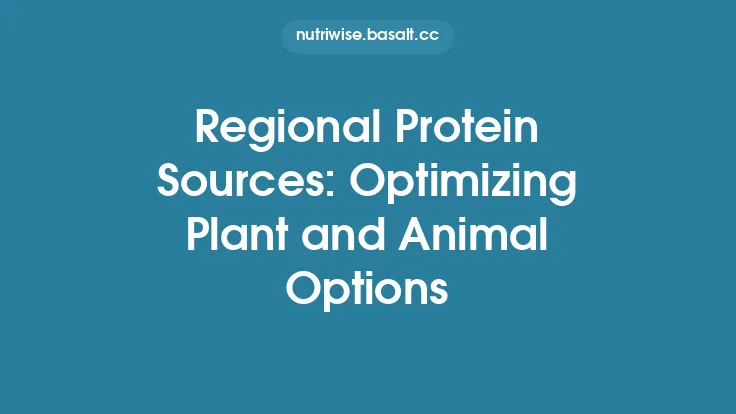Plant‑based omega‑3 nutrition has gained considerable attention as more people adopt vegetarian, vegan, or flexitarian eating patterns. While marine sources such as fish oil provide the long‑chain omega‑3 fatty acids eicosapentaenoic acid (EPA) and docosahexaenoic acid (DHA), the primary omega‑3 that plants supply is alpha‑linolenic acid (ALA). Understanding ALA’s unique properties, the foods that deliver it, and how the body utilizes it is essential for anyone looking to meet their essential fatty‑acid needs without relying on animal products.
Understanding Alpha‑Linolenic Acid (ALA)
Alpha‑linolenic acid is an 18‑carbon polyunsaturated fatty acid (18:3 n‑3) that belongs to the omega‑3 family because the first double bond is located three carbons from the methyl end of the molecule. As an essential fatty acid, ALA cannot be synthesized by human enzymes and must be obtained through the diet. Its chemical structure—three cis‑double bonds—confers a high degree of fluidity, allowing it to integrate into cell membranes and influence membrane dynamics, signaling pathways, and gene expression.
From a biochemical perspective, ALA serves two primary roles:
- Structural Component – Incorporation into phospholipids of cellular membranes helps maintain optimal membrane fluidity, which is crucial for receptor function, ion transport, and cell signaling.
- Precursor Molecule – ALA can be enzymatically elongated and desaturated to produce longer‑chain omega‑3s (EPA and DHA). Although this conversion is limited in humans, the metabolites generated can still contribute to physiological processes that depend on EPA/DHA.
Primary Plant Sources of ALA
A wide variety of seeds, nuts, oils, and legumes are rich in ALA. The following table summarizes the approximate ALA content of common plant foods per typical serving size:
| Food (raw) | Serving Size | ALA (g) | Total Fat (g) |
|---|---|---|---|
| Flaxseed (whole) | 1 tbsp (10 g) | 2.4 | 3.0 |
| Ground flaxseed | 2 tbsp (20 g) | 4.8 | 6.0 |
| Chia seeds | 1 oz (28 g) | 5.0 | 9.0 |
| Hemp seeds (hulled) | 3 tbsp (30 g) | 2.5 | 12.0 |
| Perilla seeds (toasted) | 1 tbsp (9 g) | 2.1 | 4.5 |
| Walnuts (shelled) | 1 oz (28 g) | 2.5 | 18.5 |
| Soybeans (edamame, cooked) | ½ cup (85 g) | 0.6 | 4.0 |
| Canola oil | 1 tbsp (14 g) | 1.3 | 14.0 |
| Pumpkin seeds (pepitas) | 1 oz (28 g) | 0.2 | 13.0 |
| Algal oil (certain strains) | 1 tsp (5 g) | 0.5 | 5.0 |
*Values are averages; actual ALA content can vary with cultivar, growing conditions, and processing.*
Key observations
- Seed powders and milled forms (e.g., ground flaxseed) release ALA more readily than whole seeds because the seed coat is broken, allowing digestive enzymes better access.
- Cold‑pressed oils retain the highest proportion of ALA, whereas refined or heat‑treated oils may experience partial oxidation, reducing bioactive potency.
- Algal sources are emerging as a plant‑based option that can provide both ALA and, in some strains, direct EPA/DHA, bridging the gap between traditional plant foods and marine oils.
Factors Influencing ALA Bioavailability
The amount of ALA that ultimately reaches circulation depends on several dietary and physiological variables:
- Physical Form – Whole seeds often pass through the gastrointestinal tract with limited digestion, whereas ground seeds, milled flours, or oils facilitate greater absorption.
- Co‑ingestion of Dietary Fat – ALA is a lipophilic molecule; consuming it alongside other fats (e.g., avocado, olive oil) stimulates bile secretion and micelle formation, enhancing uptake.
- Processing and Heat – Excessive heating can cause isomerization of the cis‑double bonds to trans configurations, diminishing biological activity. Light and oxygen exposure also promote oxidation, forming peroxides that may be less beneficial.
- Anti‑Nutrients – Phytic acid and certain polyphenols present in raw seeds can bind minerals that are co‑factors for desaturase enzymes, indirectly affecting ALA metabolism.
- Gut Microbiota – Emerging evidence suggests that specific microbial taxa can metabolize dietary ALA into short‑chain fatty acids and other bioactive metabolites, potentially influencing systemic effects.
Optimizing bioavailability therefore involves using minimally processed forms, pairing ALA‑rich foods with a modest amount of healthy fat, and protecting the product from light and heat.
Metabolic Conversion of ALA to EPA and DHA
Once absorbed, ALA enters the hepatic omega‑3 elongation pathway:
- Δ6‑Desaturation – ALA → stearidonic acid (SDA, 18:4 n‑3) via the enzyme Δ6‑desaturase.
- Elongation – SDA → eicosatetraenoic acid (ETA, 20:4 n‑3) through a 2‑carbon elongase.
- Δ5‑Desaturation – ETA → EPA (20:5 n‑3) via Δ5‑desaturase.
- Further Elongation & β‑Oxidation – EPA can be elongated to docosapentaenoic acid (DPA, 22:5 n‑3) and subsequently converted to DHA (22:6 n‑3) through a series of elongation, desaturation, and peroxisomal β‑oxidation steps.
Conversion efficiency in humans is modest:
- ALA → EPA: Approximately 5–10 % in most individuals.
- ALA → DHA: Typically <1 % and often negligible.
Several factors modulate these rates:
- Genetic polymorphisms in the FADS1 and FADS2 genes (encoding Δ5 and Δ6 desaturases) can reduce enzyme activity.
- Dietary omega‑6 fatty acids (particularly linoleic acid) compete for the same desaturase enzymes, lowering conversion when omega‑6 intake is high.
- Age and sex: Women of reproductive age often exhibit higher conversion rates, possibly due to estrogen‑mediated up‑regulation of desaturases.
- Nutrient status: Adequate zinc, magnesium, and vitamin B6 are required for optimal desaturase function.
Given the limited endogenous synthesis, many plant‑based eaters rely on direct ALA intake for its own physiological actions, while recognizing that only a fraction will become EPA/DHA.
Health Implications of ALA Intake
Although ALA’s conversion to EPA/DHA is modest, the fatty acid exerts several independent health effects:
Anti‑Inflammatory Activity
ALA can be incorporated into phospholipids, where it competes with arachidonic acid (AA) for cyclooxygenase (COX) and lipoxygenase (LOX) enzymes. This competition reduces the production of pro‑inflammatory eicosanoids derived from AA, shifting the balance toward less inflammatory mediators.
Cellular Membrane Integrity
The presence of ALA in membrane phospholipids enhances fluidity, which influences receptor conformation, ion channel function, and the activity of membrane‑bound enzymes. This fluidity is especially important in neuronal membranes, where rapid signal transduction is required.
Skin Health
Topical and dietary ALA have been shown to improve transepidermal water loss and support the barrier function of the stratum corneum. The fatty acid’s anti‑inflammatory properties also help mitigate conditions such as eczema and psoriasis.
Cognitive and Mood Support
While DHA is the predominant omega‑3 in brain tissue, epidemiological studies suggest that higher dietary ALA correlates with modest improvements in memory performance and mood regulation, possibly through indirect mechanisms involving reduced systemic inflammation and modest EPA production.
Metabolic Regulation
ALA intake has been associated with improved insulin sensitivity and modest reductions in fasting glucose levels. The mechanisms may involve alterations in cell membrane composition that affect insulin receptor signaling, as well as anti‑inflammatory effects that alleviate metabolic stress.
Pregnancy and Early Development
During gestation, ALA serves as a substrate for fetal synthesis of EPA and DHA, which are critical for neurodevelopment. Although direct DHA supplementation is often recommended for pregnant individuals, ensuring adequate ALA intake remains a supportive strategy, especially for those following plant‑based diets.
Incorporating ALA‑Rich Foods into Daily Meals
Practical culinary strategies can help meet recommended ALA intakes (approximately 1.1 g/day for adult women and 1.6 g/day for adult men, per many national guidelines):
- Breakfast: Sprinkle 1 tbsp of ground flaxseed or chia seeds onto oatmeal, yogurt, or a smoothie. Blend to avoid seed clumping and improve digestibility.
- Salads & Bowls: Add a handful of walnuts or hemp seeds to leafy greens, grain bowls, or bean salads. Drizzle with a cold‑pressed canola or walnut oil for an extra ALA boost.
- Baking: Substitute up to 25 % of wheat flour with ground flaxseed meal in muffins, pancakes, or bread. This not only raises ALA content but also adds soluble fiber.
- Snacks: Prepare homemade energy bars using a base of dates, almond butter, and a mixture of chia and hemp seeds. Press into a pan and refrigerate for a portable ALA‑rich snack.
- Cooking Oils: Use cold‑pressed flaxseed oil in dressings or as a finishing drizzle; avoid heating it above 150 °F (65 °C) to preserve its integrity.
Storage tips (focused on preserving ALA potency): Keep whole seeds in airtight containers in a cool, dark pantry; ground seeds and oils should be refrigerated and used within a few weeks to limit oxidation.
Plant‑Based ALA Supplements
For individuals who struggle to achieve sufficient ALA through food alone, several supplement formats are available:
| Form | Typical Dose (ALA) | Notable Features |
|---|---|---|
| Softgel capsules (flaxseed oil) | 1–2 g per capsule | Convenient; often combined with antioxidants (e.g., vitamin E) to protect against oxidation |
| Liquid emulsions (flaxseed or perilla oil) | 1–3 tsp (5–15 ml) | Easy to add to smoothies; emulsification improves absorption |
| Microencapsulated powders (ground flaxseed) | 5–10 g per serving | Shelf‑stable; can be mixed into beverages or baked goods |
| Algal oil blends (ALA + minor EPA/DHA) | 500 mg–1 g ALA + 100 mg EPA/DHA | Provides a small direct EPA/DHA contribution while remaining plant‑based |
Dosage considerations
- Most research on health outcomes uses daily ALA intakes ranging from 2 to 4 g. Exceeding 10 g per day may increase the risk of gastrointestinal discomfort due to the high fiber content of seed powders.
- Individuals on anticoagulant therapy should consult a healthcare professional, as high doses of omega‑3 fatty acids (including ALA) can modestly affect platelet aggregation.
Stability and oxidation
ALA is highly unsaturated and prone to peroxidation. High‑quality supplements typically incorporate:
- Antioxidant co‑ingredients (e.g., mixed tocopherols) to scavenge free radicals.
- Nitrogen flushing and opaque packaging to limit exposure to oxygen and light.
- Microencapsulation technologies that create a protective barrier around the oil droplets, extending shelf life.
When selecting a supplement, verify that the manufacturer provides a re‑testing date for peroxide value or anisidine value, indicating the product’s oxidative status.
Special Populations and Considerations
| Population | Specific Needs | Practical Recommendations |
|---|---|---|
| Vegans & Vegetarians | Primary source of omega‑3s | Emphasize daily inclusion of ground flaxseed, chia, or hemp seeds; consider an ALA supplement if dietary intake is low |
| Pregnant & Lactating Women | Support fetal brain development | Aim for at least 2 g ALA per day; discuss with a provider whether a modest EPA/DHA algal supplement is warranted |
| Infants (breast‑fed) | Maternal ALA intake influences breast milk composition | Mothers should consume 2–3 g ALA daily; fortified infant formulas may contain ALA from plant oils |
| Elderly | Potential decline in desaturase activity | Higher ALA intake (up to 3 g) may help maintain membrane fluidity; monitor for interactions with lipid‑lowering medications |
| Individuals with Metabolic Disorders (e.g., type 2 diabetes) | May benefit from anti‑inflammatory effects | Incorporate ALA‑rich foods as part of a low‑glycemic, high‑fiber diet; avoid excessive added sugars in ALA‑containing snack products |
| People on Anticoagulant Therapy | Slight antiplatelet effect | Keep ALA intake below 3 g/day unless advised otherwise by a clinician |
Emerging Research and Future Directions
The landscape of plant‑based omega‑3 nutrition continues to evolve:
- Biofortified Crops: Genetic engineering and selective breeding are producing flax varieties with up to 30 % higher ALA content, potentially reducing the volume needed to meet daily recommendations.
- Stearidonic Acid (SDA) Enrichment: SDA (18:4 n‑3) lies one desaturation step downstream of ALA and converts to EPA more efficiently. Certain oilseed crops (e.g., genetically modified camelina) are being cultivated to yield high SDA oil, offering a bridge between ALA and EPA without marine sources.
- Synergistic Formulations: Combining ALA with polyphenol‑rich extracts (e.g., rosemary, green tea catechins) may protect the fatty acid from oxidation and enhance cellular uptake.
- Clinical Trials: Ongoing randomized studies are evaluating ALA’s role in neurocognitive aging, mood disorders, and insulin sensitivity in diverse populations, aiming to clarify dose‑response relationships.
- Microbiome Interactions: Preliminary data suggest that specific gut bacteria can metabolize ALA into conjugated linolenic acids with distinct anti‑inflammatory properties, opening a new avenue for personalized nutrition.
These advances promise to expand the options available to those seeking plant‑based omega‑3 nutrition, making it easier to achieve adequate ALA intake while potentially unlocking additional health benefits.
Key Takeaways
- Alpha‑linolenic acid (ALA) is the essential plant‑based omega‑3 fatty acid that must be obtained through diet.
- Rich dietary sources include flaxseed, chia, hemp, perilla, walnuts, soy, and certain cold‑pressed oils; ground or milled forms improve absorption.
- Conversion to EPA/DHA is limited (≈5–10 % to EPA, <1 % to DHA), so most health effects of ALA are independent of long‑chain metabolites.
- Health benefits span anti‑inflammatory actions, membrane fluidity, skin barrier support, modest cognitive and mood improvements, and metabolic regulation.
- Optimizing bioavailability involves pairing ALA with other fats, protecting it from heat, light, and oxygen, and choosing minimally processed foods or high‑quality supplements.
- Special populations—including vegans, pregnant women, the elderly, and those on anticoagulants—should tailor ALA intake to their specific needs and consult healthcare professionals when necessary.
- Future innovations such as high‑ALA crops, SDA‑rich oils, and microbiome‑targeted strategies are poised to broaden the impact of plant‑based omega‑3 nutrition.
By integrating a variety of ALA‑rich foods and, when appropriate, well‑formulated supplements, individuals can confidently meet their essential omega‑3 requirements while adhering to plant‑based dietary preferences.





